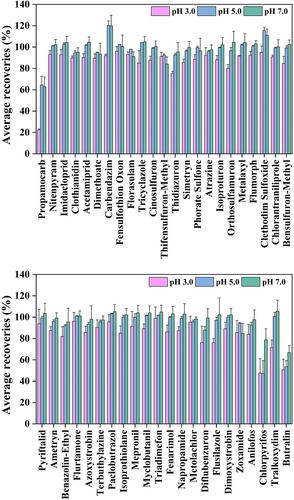The development of analytical screening techniques for pesticides is crucial for preventing and mitigating environmental contamination. Mass spectrometry-based screening methods differ based on the complexity of the sample matrix and the diversity of the target compounds. One of the major challenges is balancing cost reduction in the extraction process with the optimization of analytical results. This protocol introduces a universal and efficient scheme for the qualitative and quantitative schemes for 45 pesticides within a single analytical run.
Water samples were extracted using an SPE column, with the pH adjusted to 7. Soil samples were processed using a modified QuEChERS method. The pretreatment for water samples emphasized selecting appropriate SPE columns and optimizing pH, while for soil samples, the focus was on choosing suitable extraction solvents and extraction salt packages. The enriched samples were then analyzed using liquid chromatography–tandem mass spectrometry (LC–MS/MS). The method was evaluated for accuracy, precision, detection limits, and matrix effects.
The method enabled the simultaneous detection of 45 pesticides within a 15-minute analysis period. SPE recoveries ranged from 56.1% to 118.8%. Instrumental detection limits varied between 0.02 and 1 pg, while method detection limits extended from 0.05 to 18.47 ng/l in soil and water matrices. The approach was successfully applied to water and soil samples, with the pesticide concentration ranging from 0.1 ng/L to 38 μg/L.
The protocol substantially enhances the characterization and quantification of 45 pesticides in environmental samples, achieving a remarkable reduction in detection limits by an order of magnitude compared to previous research. This method enables the simultaneous detection of pesticides in both water and soil matrices using a single system, addressing the challenges of using separate systems for different environmental media. Furthermore, this protocol provides a crucial theoretical foundation for managing and safeguarding against pesticide pollution.


